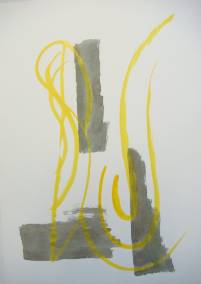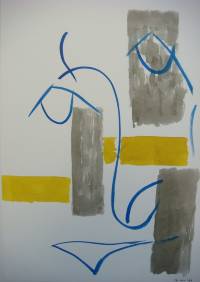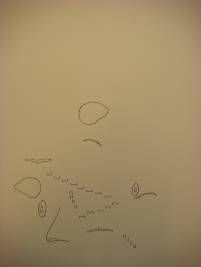1 The world is everything that is the case. 21x29.7 cm 1996
1.1 The world is the totality of facts, not of things. 21x29.7 cm 1996
1.11 The world is determined by the facts and by these being all the facts. 21x29.7 cm 1996
1 13 The facts in logical space are the world. 21x29.7 cm 1996
2 What is the case, the fact, is the existence of atomic facts. 21x29.7 cm 1996
2.01 An atomic fact is a combination of objects (entities, things). 21x29.7 cm 1996
2.011 It is essential to a thing that it can be a constituent part of a atomic fact. 21x29.7 cm 1996
2.014 Objects contain the possibility of all states of affairs. 21x29.7 cm 1996
2.02 The object is simple. 21x29.7 cm 1996
2.024 Substance is what exists independently of what is the case. 21x29.7 cm 1996
2.0251 Space, time and colour (colouredness) are forms of objects. 21x29.7 cm 1996
2.026 Only if there are objects can there be a fixed form of the world. 21x29.7 cm 1996
2.027 The fixed, the existent and the object are one. 21x29.7 cm 1996
2.0271 The object is the fixed, the existent; the configuration is the
changing, the variable. 21x29.7 cm 1996
2.031 In the atomic fact the objects are combined in a definite way. 21x29.7 cm 1996
2.032 The way in which objects hang together in the atomic fact is
the structure of the atomic fact. 21x29.7 cm 1996
2.034 The structure of the fact consists of the structures of the atomic
facts. 21x29.7 cm 1996
2.1 We make to ourselves pictures of facts. 21x29.7 cm 1996
2.11 The picture presents the facts in logical space, the existence and
non-existence of atomic facts. 21x29.7 cm 1996
2.13 To the objects correspond in the picture the elements of the
picture. 21x29.7 cm 1996
2.15 That the elements of the picture are combined with one another
in a definite way, represents that the things are so combined
with one another. 21x29.7 cm 1996
2.16 In order to be a picture a fact must have something in common
with what it pictures. 21x29.7 cm 1996
2.161 In the picture and the pictured there must be something identical
in order that the one can be a picture of the other at all. 21x29.7 cm 1996
2.17 What the picture must have in common with reality in order to
be able to represent it after its manner—rightly or falsely—is its
form of representation. 21x29.7 cm 1996
2.171 The picture can represent every reality whose form it has.
The spatial picture, everything spatial, the coloured, everything
coloured, etc. 21x29.7 cm 1996
3 The logical picture of the facts is the thought. 21x29.7 cm 1996
3.001 “An atomic fact is thinkable”—means: we can imagine it. 21x29.7 cm 1996
3.01 The totality of true thoughts is a picture of the world. 21x29.7 cm 1996




